Are you looking to revamp your kitchen cabinets but need some help with options? Let’s find the perfect types of boards for kitchen cabinets. Is it TFM, MR+, MDF, plywood, or veneer boards, and what are their pros and cons? Whether you prefer a traditional or modern look, we’ll guide you through finishes, colors, and textures. Get ready to transform your kitchen!
Importance of choosing the right boards for kitchen cabinets
Choosing the right boards for your kitchen cabinets is essential. High-quality boards enhance the look and durability of your kitchen and make your cabinets more straightforward to maintain. Investing in good boards can boost your home’s value and ensure your cabinets stand up to daily use. You can create a beautiful, efficient kitchen that lasts for years by selecting the best boards.
Different types of boards used for kitchen cabinets
You can use various types of boards for kitchen cabinets, each with unique benefits. Exploring the options will help you to choose one that aligns with your design tastes, budget, and functional needs.
01. TFM (Thermally Fused Melamine):
TFM boards are engineered wood made from wood fibers and particles bonded with melamine resin, creating a durable and moisture-resistant surface.
- Pros: Durable, cost-effective, and available in various colors and patterns.
- Cons: Limited flexibility, edges can chip.
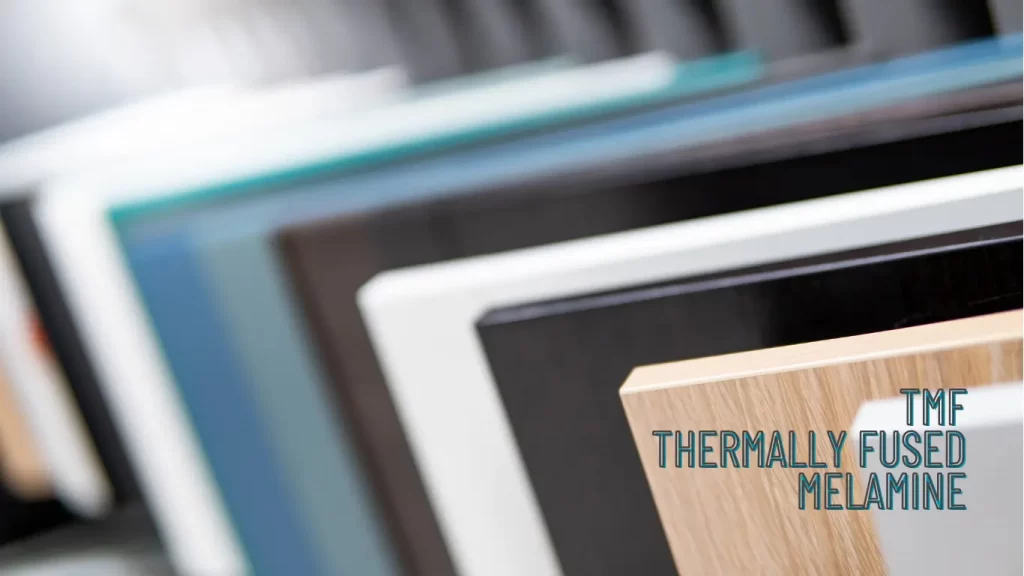
02. MR+ Board (Moisture Resistant):
MR+ boards are engineered wood panels that resist humidity and moisture, making them ideal for kitchen cabinets.
- Pros: Water-resistant, durable.
- Cons: It can be expensive and has limited availability.
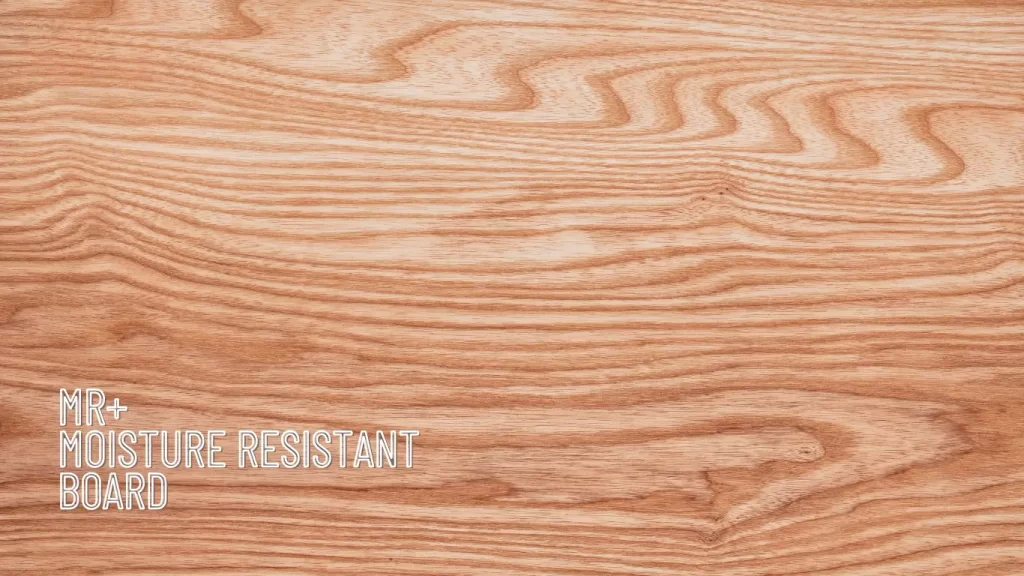
03. MDF (Medium-Density Fiberboard):
MDF is made from wood powder bonded with resin. It’s smooth, dense, and easy to paint, making it a popular choice for painted kitchen cabinets.
- Pros: Smooth surface, consistent.
- Cons: Sensitive to water damage, less durable.

04. Plywood:
Plywood is made from thin layers of wood veneer bonded, creating a strong and versatile material. Due to its stability and strength, it’s a popular choice for kitchen cabinets.
- Pros: Strong, stable, versatile, lightweight.
- Cons: More expensive, may have surface defects, can bend with seasonal shifts.
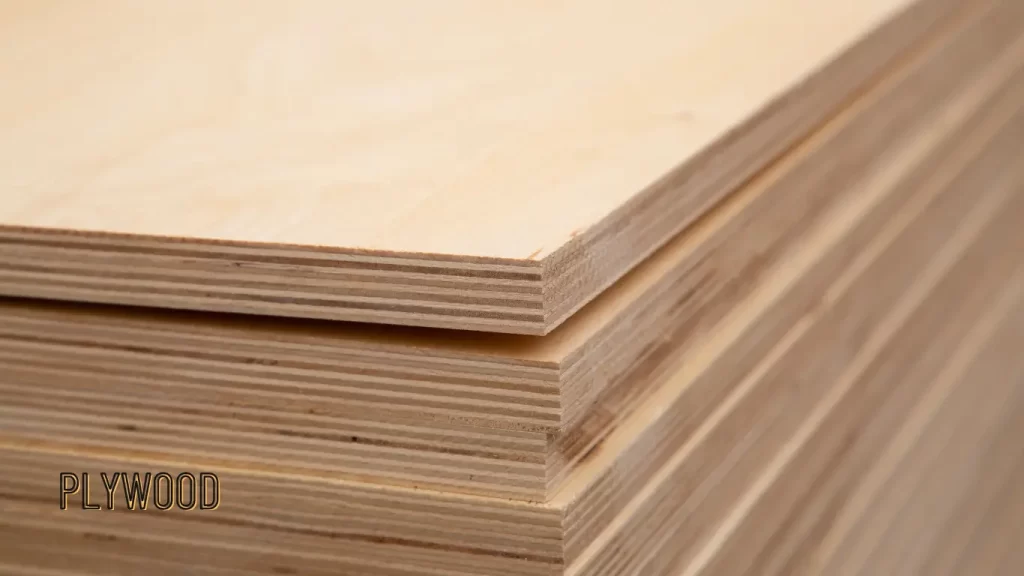
05. Veneer Board:
Veneer boards consist of a thin layer of natural wood bonded to a core material like MDF or particleboard. They offer the look of solid wood at a lower cost.
- Pros: Aesthetic appeal, consistency, less warping.
- Cons: Vulnerable to water, less durable, can fade over time.
Factors to consider when choosing boards for kitchen cabinets
When selecting boards for your kitchen cabinets, keep these factors in mind:
- Durability: Pick boards that can handle daily use, moisture, and heat to ensure they last.
- Moisture Resistance: Go for boards that resist warping and swelling, especially in wet areas.
- Ease of Maintenance: Choose boards that are easy to clean and maintain.
- Aesthetic Appeal: Make sure the boards’ color, grain, texture, and finishes match your kitchen’s design.
- Budget: Balance your design goals with your budget, considering costs for installation, finishing, and maintenance.
Understanding the different finishes available
The finish you choose for kitchen cabinet boards can transform your space’s look and feel. From natural wood tones to bold, statement-making colors, there’s a wide range of finishes to explore.
01. Natural Wood Finishes:
- Hand Polish: Smooth surfaces by hand, perfect for intricate areas.
- Lacquer Polish: Provides a stiff, glossy, and durable finish.
Applicable Boards: Any natural wooden surface.
02. Painted Finishes:
- Duco Paint: Smooth, glossy, and water-resistant, but can turn yellow over time.
- PU (Polyurethane) Paint: Durable, moisture-resistant, available in matte and high-gloss.
Applicable Boards: Veneer, plywood, MR+, MDF.
03. Laminate Finishes:
- HPL (High-Pressure Laminate): Durable, scratch and heat-resistant.
- Acrylic: High-gloss, mirror-like, scratch and moisture-resistant.
- SPC (Stone Plastic Composite): Waterproof, dent and scratch-resistant.
Applicable Boards: TFM, MR+, Veneer, MDF, Plywood.
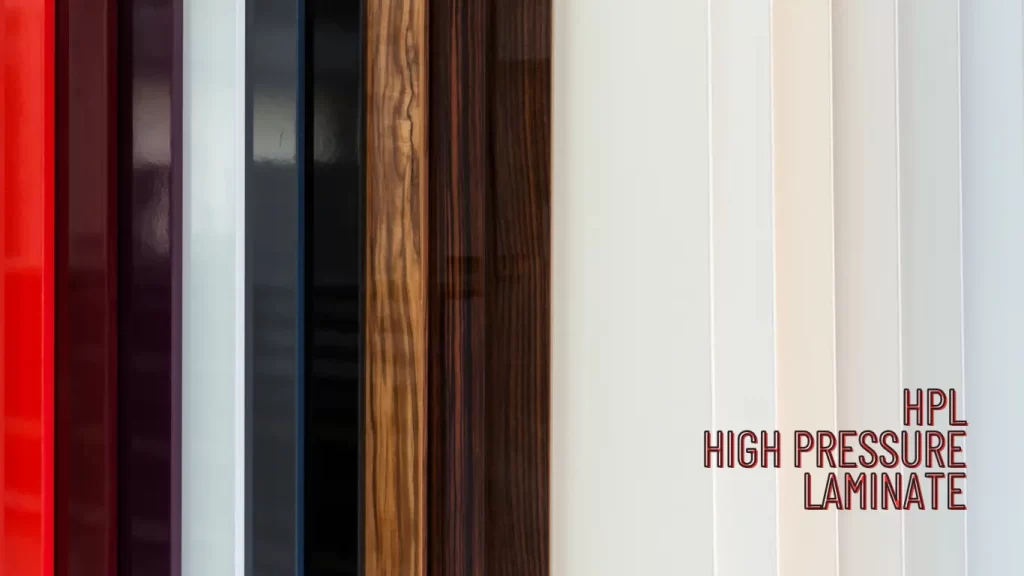
Ultimately, your finish should match your style preferences and complement your kitchen’s overall design. Exploring different finishes and samples empowers you to make well-informed decisions that breathe life into your vision.
The popular combination of boards and finishes for kitchen cabinets
01. MR+ Board and Laminate Finish (HPL, Acrylic, etc.)
- Durability: MR+ (Moisture Resistant) boards are super durable and moisture-resistant. Laminate finishes like HPL and acrylic add extra protection against scratches and heat.
- Longevity: This combo offers excellent longevity due to its resistance to moisture and wear.
- Cost Effectiveness: It’s a bit pricier compared to other options.
- Aesthetics: Laminate finishes come in various colors and patterns, providing a sleek and modern look.
- Disadvantage: The higher cost can be a barrier for budget-conscious homeowners.
02. TFM Board and Laminate Finish (HPL, Acrylic, etc.)
- Durability: TFM (Thermally Fused Melamine) boards are durable and resistant to scratches and stains. Combined with laminate finishes, they offer enhanced durability.
- Longevity: This combo is long-lasting, especially in high-traffic areas like kitchens.
- Cost Effectiveness: Generally affordable, making it a budget-friendly choice.
- Aesthetics: Offers a wide range of design options, from wood grains to solid colors, ensuring a stylish finish.
- Disadvantage: TFM boards can be less moisture-resistant than MR+ boards, potentially leading to swelling or warping over time.

03. MDF and Paint Finish (Duco or PU)
- Durability: MDF (Medium Density Fiberboard) is durable but sensitive to moisture. Paint finishes like Duco and PU (Polyurethane) add a protective, durable layer.
- Longevity: This combo offers longevity, especially with proper sealing and maintenance.
- Cost Effectiveness: Relatively affordable, making it a popular choice for many.
- Aesthetics: Paint finishes, available in various colors, provide a smooth, high-gloss, or matte appearance, giving a modern and sleek look.
- Disadvantage: MDF’s susceptibility to moisture can lead to swelling and damage if not properly sealed and maintained.
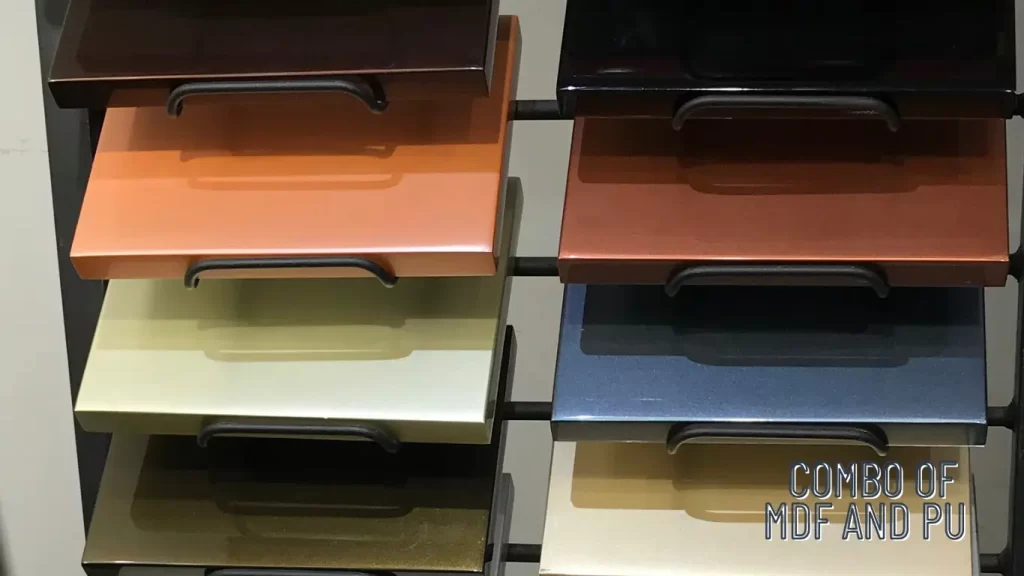
04. Veneer Board and Natural Wood Finish (Lacquer Polish)
- Durability: Veneer boards are durable but require proper maintenance. Natural wood finishes like lacquer polish add a protective layer but can be prone to scratches.
- Longevity: This combo can last long with proper care, though it may require periodic refinishing.
- Cost Effectiveness: Slightly more expensive due to the natural veneer and the labor-intensive polishing process.
- Aesthetics: It provides a rich, natural wood look with a gloss or matte finish, adding a touch of elegance to the kitchen.
- Disadvantage: Requires regular maintenance and refinishing to keep the appearance intact, which can be time-consuming and costly.
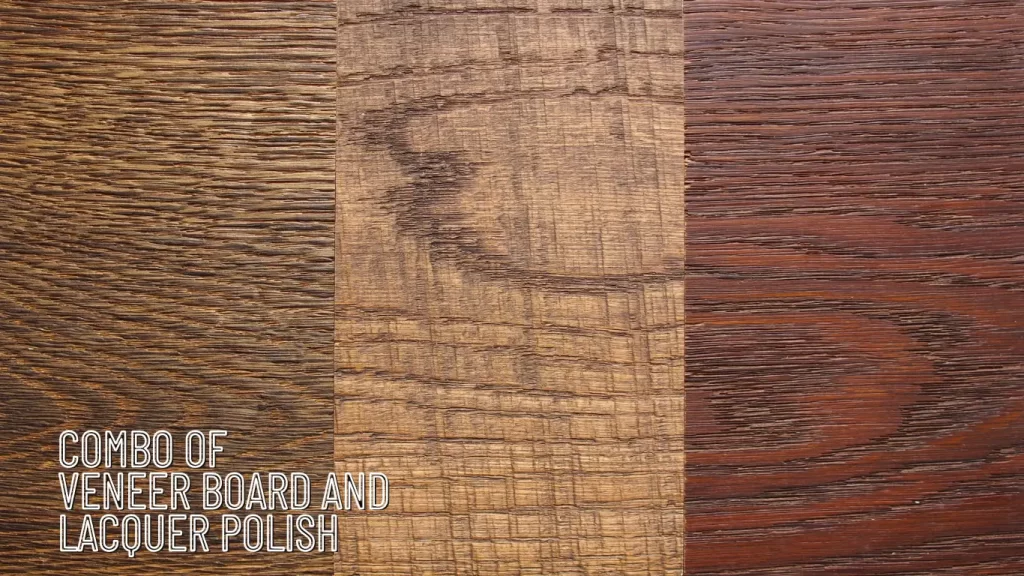
05. Plywood and Laminate Finish or Natural Wood Finish
- Durability: Plywood is known for its robustness and long-lasting durability. Laminate finishes resist scratches and moisture, while natural wood finishes offer a classic look but require more maintenance.
- Longevity: This combo provides excellent longevity, especially with proper care and maintenance.
- Cost Effectiveness: Plywood with laminate finishes is expensive, while natural wood finishes can be slightly more expensive.
- Aesthetics: Offers a wide range of design options, from modern laminates to classic wood finishes, allowing for versatile and stylish kitchen designs.
- Disadvantage: Natural wood finishes require more maintenance and can be prone to scratches and wear. If not sealed properly, they can have a seasonal effect.
Choosing the right combination of finishes and boards for your kitchen style
Choosing the suitable board material for your kitchen cabinets balances durability, practicality, and style. Your selected board should enhance your kitchen’s aesthetics, creating a cohesive and visually appealing design.
Traditional Kitchens:
For a classic, timeless vibe, go for plywood or veneer boards like Burma teak, red oak with lacquer polish, or MDF boards with Duco or PU finishes. These materials offer a warm, inviting look that pairs beautifully with traditional design elements like raised-panel doors, ornate hardware, and rich, earthy colors.
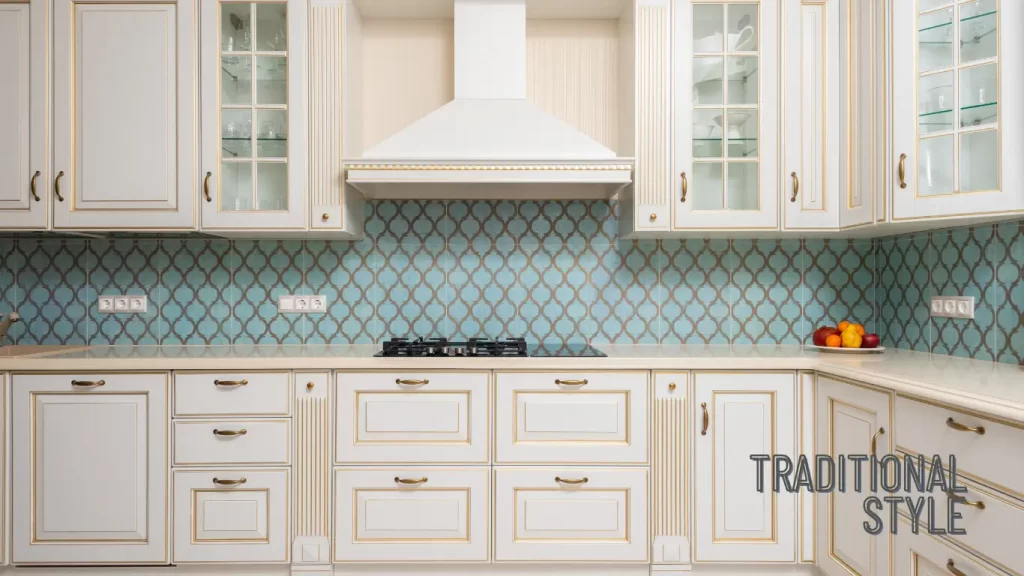
Contemporary Kitchens:
Consider materials like MR+, TFM, or plywood combined with HPL or acrylic for a sleek, modern aesthetic. These options provide a clean, seamless look that complements contemporary cabinetry designs, including flat-panel doors and minimalist hardware.
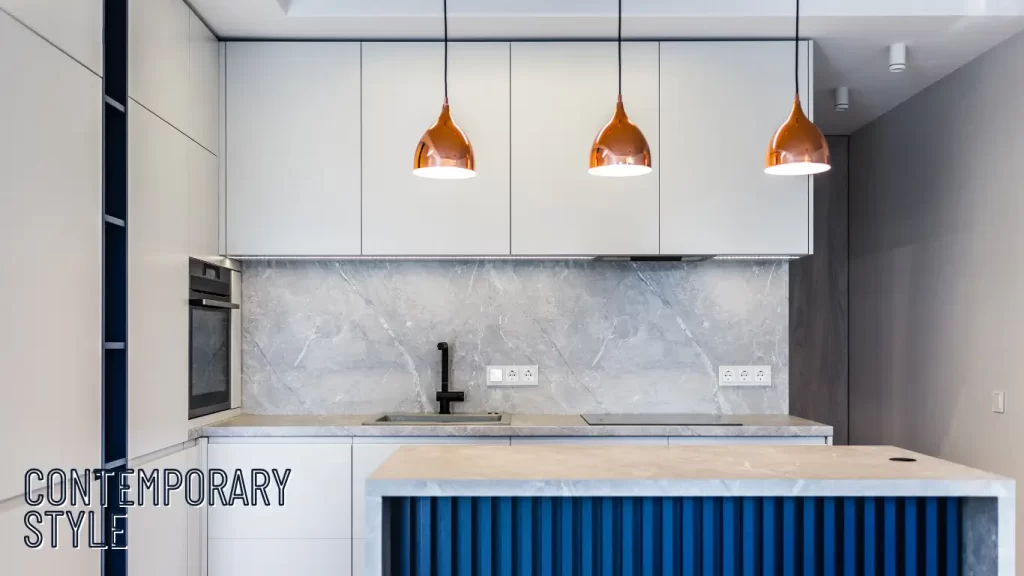
Transitional Kitchens:
Combine plywood with a natural wooden finish or MR+/TMF with wooden textured HPL to blend traditional and contemporary styles. This mix offers a sturdy base with a timeless look, perfect for a versatile kitchen design.
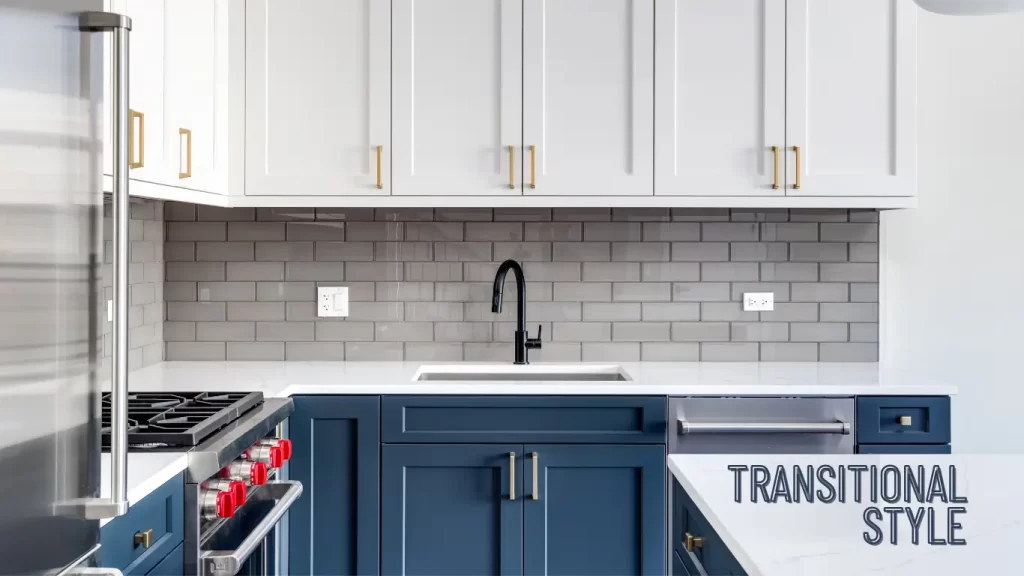
Dzynique's Ultimate Guide to the Best Boards and Finishes for Maximum Value
At Dzynique, we’re all about creating stunning contemporary and transitional designs that are cost-effective and quick to complete.
So, finally what types of boards for kitchen cabinets you should select? Here is our recomentation:
For the best look and durability, we suggest using a moisture-resistant MR+ board with HPL for the base cabinet and carcass, as these areas are more likely to get wet. The TFM board with HPL is an excellent choice for the overhead cabinet because it’s less exposed to water and affordable.
To top it off, consider stainless steel hardware like hydraulic hinges, screws, and drawer channels for enhanced performance. This combination offers fantastic value for money and ensures your space stays beautiful and functional for years.
Let’s turn your interior dreams into reality together!
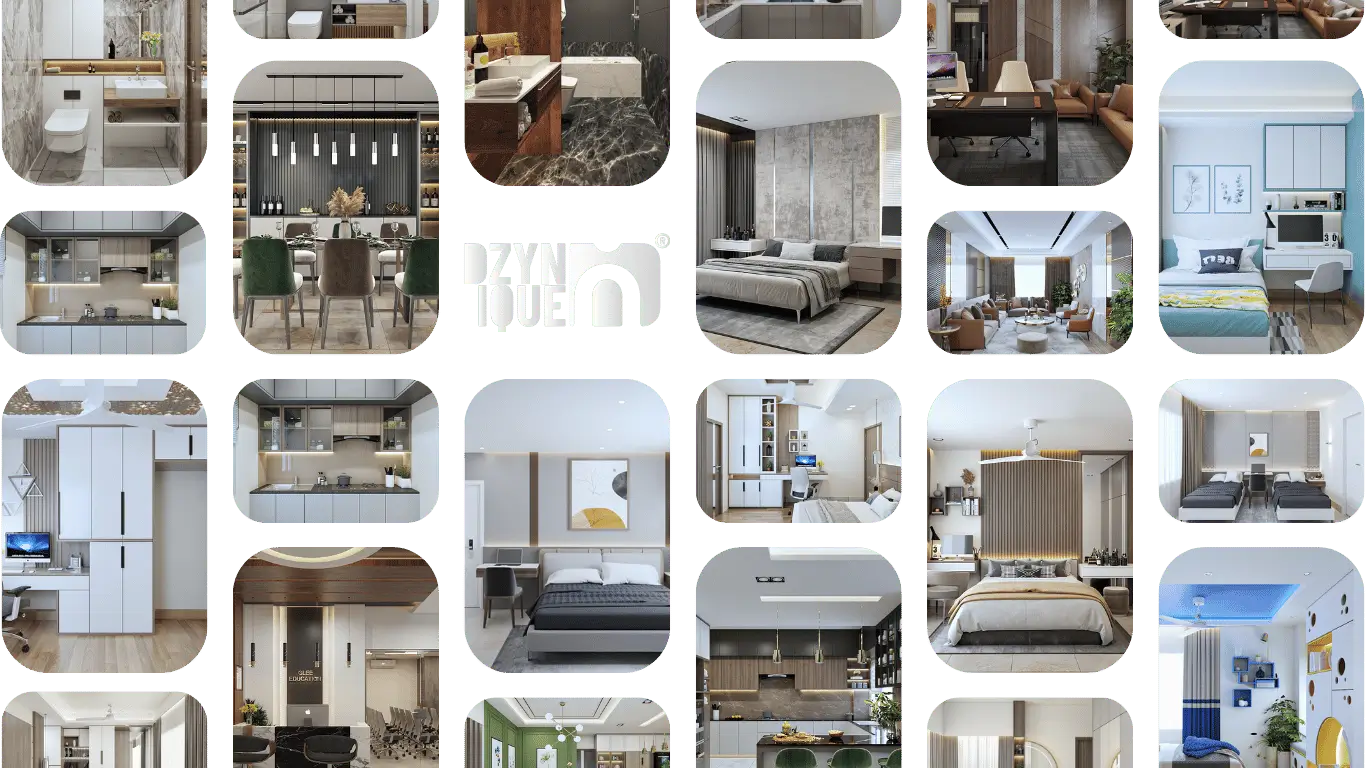
Get A free Appointment today
FAQ
How do I choose the right finish for my kitchen cabinets?
Gloss Finish: Reflects light, making the space feel large; easy to clean but shows fingerprints.
Matte Finish: Offers a modern look and hides fingerprints but can be harder to clean.
Semi-Gloss Finish: A balance between gloss and matte, providing durability and easy cleaning.
Can I mix different types of boards in my kitchen cabinets?
Yes, you can mix different types of boards to balance cost and durability. Plywood can be used for carcasses, shelves, and MDF for doors and panels.
How do I maintain and clean different types of cabinet finishes?
Gloss Finish: Wipe with a damp cloth and mild detergent; avoid abrasive cleaners.
Matte Finish: Use a soft cloth and gentle cleaner; avoid scrubbing to prevent damage.
Wood Finish: Regularly dust and use wood polish to maintain the shine.
What are the recent trends in kitchen cabinet finishes?
Two-Tone Cabinets: Combining two different colors or finishes.
Natural Wood Finishes: Highlighting the wood grain.
Matte Black: A sleek and modern choice.
Are there eco-friendly options for kitchen cabinet boards and finishes?
Bamboo: A sustainable and durable option.
Recycled Materials: Boards made from recycled wood fibers.
Low-VOC Finishes: Environmentally friendly and safer for indoor air quality.
How do I choose the right color for my kitchen cabinets?
Consider Your Kitchen Size: Light colors can make a small kitchen feel more prominent, while dark colors add warmth to a spacious kitchen.
Match with Countertops and Backsplash: Please ensure the cabinet color complements other elements in your kitchen.
Personal Preference: Choose a color that reflects your style and taste.
Are there specific finishes that are more durable for kitchen cabinets?
Polyurethane Finish: Highly durable and resistant to scratches and moisture.
Lacquer Finish: Provides a hard, durable surface but can be prone to chipping.
HPL: Durable and easy to clean, often used on MR+ or TFM board for more durability.
